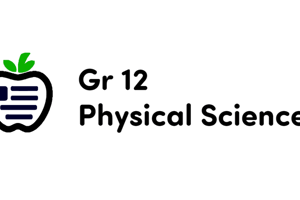Podcast
Questions and Answers
What is work?
What is work?
A force that causes a displacement of an object.
Work is equal to the magnitude of the force, F, times the magnitude of the displacement. Formula: W = ______
Work is equal to the magnitude of the force, F, times the magnitude of the displacement. Formula: W = ______
Fd
What determines whether work is done on an object?
What determines whether work is done on an object?
The object must be moved because of the action of a force.
How is work related to the direction of the displacement?
How is work related to the direction of the displacement?
The formula for net work done by a constant net force is Wnet = Fnet d cos______
The formula for net work done by a constant net force is Wnet = Fnet d cos______
What units are used to measure work?
What units are used to measure work?
Can work be positive or negative?
Can work be positive or negative?
How does work that changes an object's speed affect whether the work is positive or negative?
How does work that changes an object's speed affect whether the work is positive or negative?
What is kinetic energy?
What is kinetic energy?
The formula for kinetic energy is KE = ______
The formula for kinetic energy is KE = ______
How is kinetic energy measured?
How is kinetic energy measured?
How is kinetic energy related to an object's speed and mass?
How is kinetic energy related to an object's speed and mass?
The Work-Kinetic Energy Theorem states Wnet = ______
The Work-Kinetic Energy Theorem states Wnet = ______
How does a moving hammer use its energy upon striking a nail?
How does a moving hammer use its energy upon striking a nail?
What is potential energy?
What is potential energy?
What is gravitational potential energy?
What is gravitational potential energy?
The formula for gravitational potential energy is PEg = ______
The formula for gravitational potential energy is PEg = ______
How is gravitational potential energy measured?
How is gravitational potential energy measured?
How is height measured for gravitational potential energy?
How is height measured for gravitational potential energy?
What is elastic potential energy?
What is elastic potential energy?
What is the relaxed length of a spring?
What is the relaxed length of a spring?
How does elastic potential energy get into a spring?
How does elastic potential energy get into a spring?
The formula for elastic potential energy is PEelastic = ______
The formula for elastic potential energy is PEelastic = ______
Flashcards are hidden until you start studying
Study Notes
Work
- Work occurs when a force causes an object to move, defined as either the force applied or the distance over which it acts.
- The formula for work is W = Fd, where W is work, F is the force, and d is the displacement.
- Work is only done when the object is displaced due to the applied force; mere application of force without movement does not count as work.
Work and Direction
- For work to be done, the force must have a component parallel to the object's displacement; perpendicular components do not do work.
- Net work done by a constant force can be calculated with the formula W_net = F_net × d × cos(θ), incorporating the angle θ between force and displacement.
Measurement and Properties of Work
- Work is measured in units of newton-meters (N×m), equivalent to joules (J).
- Work can be positive or negative: positive work occurs when force and displacement are in the same direction, while negative work occurs when they are in opposite directions.
Kinetic Energy
- Kinetic energy (KE) is the energy of an object in motion.
- The formula for kinetic energy is KE = 1/2 mv², where m is mass and v is speed.
- Kinetic energy is also measured in joules (J) and varies with an object's mass and speed. A heavier object at the same speed has more kinetic energy.
Work-Kinetic Energy Theorem
- The Work-Kinetic Energy Theorem states that the net work done on an object equals the change in its kinetic energy: W_net = ∆KE.
- When a hammer strikes a nail, part of the energy drives the nail while some energy is converted to heat due to impact.
Potential Energy
- Potential energy (PE) is stored energy due to an object's position or configuration.
- Gravitational potential energy is associated with an object's position relative to a gravitational source, measured by the formula PE_g = mgh, where h is the height.
Measurement of Potential Energy
- Gravitational potential energy is measured in joules (J) and depends on the chosen reference height, typically ground level.
- Elastic potential energy is stored in objects like springs when they are compressed or stretched, expressed by the formula PE_elastic = 1/2 kx², where k is the spring constant and x is the displacement from its relaxed length.
Elastic Potential Energy
- The relaxed length of a spring is its length when no external force is acting. Elastic potential energy is stored when the spring is compressed or stretched beyond this length.
Studying That Suits You
Use AI to generate personalized quizzes and flashcards to suit your learning preferences.




